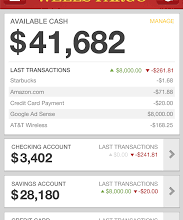If you’re in the market to shop for a new car and want to know all about leasing and financing, this guide is for you. The primary difference between a lease vs financing relates to the costs and responsibilities involved. So basically, knowing the key differences between leasing and financing will assist you in choosing the best one for your needs.
What is Lease Financing
Lease financing is a different way to get a loan for a medium- or long-term period. The owner of the asset grants another person the right to use that asset in exchange for periodic payments under lease financing. The term “lessee” refers to the person making use of the asset, while “lessor” refers to the owner.
Lease financing is a popular medium- and long-term financing method in which the owner of an asset grants another person the right to use that asset in exchange for periodic payments. Lease rental is the monthly payment made by the lessee to the lessor. The lessee is given the right to use the asset, but the lessor owns it. At the end of the lease contract, the asset is returned to the lessor, or the lessee is given the option to purchase the asset or renew the lease agreement.
Lease vs. Finance: Know The Difference
The primary difference between leasing and financing is one of ownership. When you lease a car, you do not own it. Instead, you pay to use it for a set period of time. When your lease expires, you can either renew it, return the car, or purchase it. You own the vehicle outright if you finance it.
Furthermore, lease payments for the same vehicle and term are 30-60% lower than loan payments. Leases have fewer maintenance issues because they last the same amount of time as the manufacturer’s warranty coverage.
When you finance a car, you will have to deal with costly repairs after the manufacturer’s warranty expires. Furthermore, if you cause excessive wear and tear on a leased vehicle, you may be required to pay a penalty fee to the leasing company. When you finance the vehicle, you have no such concerns. Excessive wear and tear, on the other hand, may have an impact on the resale value of a financed vehicle.
What Are the Two Types of Lease Financing?
Operating leases and financing leases are the two most common types of leases (also called capital leases). One must consider how fully the lessor has transferred the risks and rewards of asset ownership to the lessee to distinguish the two.
#1. Finance Lease
A long-term lease for three years or more, after which you can sell or scrap the equipment or pay a nominal rent. Over the course of the lease, the leasing company recovers the full cost of the equipment, plus charges. You are responsible for maintaining and insuring the equipment even though you do not own it. The leased asset must be shown on your balance sheet as a capital item, or an item purchased by the company. You can claim capital allowances on “long funding leases” of seven years or more.
#2. Operating Lease
Consider the following points when considering operating leasing:
- If you do not require the equipment for its entire working life, the leasing company will return the asset at the end of the lease.
- The leasing company is in charge of maintenance and insurance.
- You are not required to include the asset on your balance sheet.
What Are the 4 Primary Types of Leases?
#1. Absolute Net Lease ABL
In an absolute net lease, the tenant bears the entire burden, including insurance, taxes, and maintenance. The absolute type is commonly used in single-tenant systems, in which the property owner constructs housing units to meet the needs of a tenant. The proprietor hands over the finished unit to the tenant for a set period of time.
In such cases, the tenants are typically large corporations that understand the terms of the contract and are willing to shoulder the costs. But because most of the work is done by the renter, property owners usually agree to lower monthly rates.
#2. Triple Net Lease
The triple net lease comes with three expense categories: insurance, maintenance, and real estate taxes. The property owner passed these expenses on to the tenant as rent excesses, making them pass-through or operating expenses. Taxes, insurance, and common area fees are some examples of excesses (TICAM).
Triple-net agreements, also known as NNN agreements, are the norm in single-tenant and multi-tenant rental units. Under a single-tenant lease, the tenant has control over landscaping and exterior maintenance. In short, the tenant determines the appearance of the property for the duration of the tenancy.
When a property has more than one tenant, the owner has full control over how the property looks. In this manner, no tenant can detract from the overall appearance of a building. In a multi-tenant arrangement, the tenant must also pay a regular share of operating costs based on the number of tenants.
As a result, tenants are granted the right to audit the building’s operating costs. Under a triple-net lease, the property owner cannot hire a janitor. Each tenant contributes to the costs of janitorial and interior maintenance.
#3. Modified Gross Lease
The property owner bears the entire burden under the modified gross lease. According to the terms, the owner is responsible for all insurance, property taxes, and common area maintenance. The tenant, on the other hand, has to pay for cleaning, utilities, and repairs inside the building.
The tenancy agreement also says that the building’s roof and other structural parts are the owner’s responsibility. However, because the owner bears a large portion of the tenancy costs, the monthly rates are higher than for other types.
The modified lease type benefits tenants because the owner handles operating costs and other risks. The tenant’s rates are consistent throughout the year, and he has no say in the property’s operations. Unfortunately, the owner may decide to charge a monthly fee to cover the cost of managing the building.
#4. Full-Service Lease
As the name suggests, a full-service lease takes care of most of the costs of running a building. However, there are some exceptions, such as data and phone costs. The owner of the property has to pay for the upkeep of the common areas, taxes, insurance, utilities, and cleaning. It guarantees the lessee, also known as the tenant, use of the property in exchange for regular payments to the lessor (the property owner or landlord) for a specified period of time. It gives the lessee, also called the tenant, the right to use the property for a certain amount of time in exchange for regular payments to the lessor, who is the property owner or landlord. If the terms of the lease are not followed, both the lessee and the lessor face consequences. A lease is an example of an incorporeal right.
What Is the Difference Between an Operating vs Finance Lease?
- Title: At the end of the lease term, ownership of the property is transferred to the lessee under a finance lease agreement. However, in an operating lease agreement, the lessor retains ownership of the property during and after the lease term.
- Balloon/Residual amount: There is a balloon/residual option in a finance lease agreement for the lessee to purchase the property or equipment at a specific price. However, the lessee does not have this option under an operating lease A finance lease’s balloon/residual is determined using ATO asset guidelines.
- Administration and running costs: All operating costs (servicing, registration, tires, insurance, and so on) are included in the lease for the specified term and mileage with a single set monthly repayment amount. These are typically not included in a finance lease, which means that the lessee may face additional administration and price fluctuations.
- Account management: Whilst the operating leases were previously off-balance-sheet, the tax treatment of leases changed in 2019 with the implementation of accounting standard AASB16, with operating leases now appearing on the balance sheet as liabilities as well as right-of-use expenses.
Lease vs Finance: Which Is Better, Finance or Operating Lease?
In many cases, the answer to this question will depend on the specifics of your case. The end-user pays one monthly payment and returns the vehicle at the end with an operating lease agreement. Because of the administrative savings, these are generally efficient for organizations that operate at least a few cars.
Finance leases require more administration and may increase the lessee’s resale risk if the balloon amount is not reached at the end of the term, depending on the asset and ATO guidelines.
What Is Finance Lease With Example?
A finance lease is used to finance vehicles, especially hard-working commercial vehicles when the company wants the benefits of leasing but not the responsibility of returning the vehicle in good condition. A finance lease can be used for a variety of assets other than commercial vehicles. For example:
A health club wanted to purchase new gym equipment. The total amount financed was £20,000, with the agreement calling for 60 monthly payments with no down payment. Importantly, the balloon payment was set to £0, which means that the client (or, more likely, their gym users!) can really work out on the equipment knowing that there will be no liability at the end of the agreement. After 60 months, you can sell the equipment or rent it for a peppercorn.
Lease vs Finance: How Does Lease Work?
When you lease a car, your monthly payment is based on the vehicle’s depreciation (the difference between its current value and its value at the end of the lease), plus interest and fees.
Your lease agreement includes the following clauses:
- How much you must pay at the beginning of your lease?
- The length of the lease—typically, a lease lasts two to four years.
- What the car is currently worth and what it will be worth at the end of the lease.
- The fees you must pay at the end of your lease.
- The “money factor” or a rent charge, is comparable to an auto loan interest rate.
- Termination fees may apply if you return the vehicle before the lease expires.
- How many miles you are permitted to drive per year
Many leases limit the number of miles you can drive each year to between 10,000 and 15,000. If you go over this limit, you may have to pay a fee per mile. The lessor’s definition of normal wear and tear, as well as the amount you’ll have to pay if there’s excessive wear and tear If you smoke in your car, have children, transport pets, or park on a busy street, you increase your chances of being fined. Some of the rules may appear to be taxing, but keep in mind that you do not own the vehicle. The owner of the car stays the same, and you must return it in good shape at the end of the lease.
Conclusion
Finally, whether you want to lease or finance your car is determined by your long-term goals. If you like to buy new cars every few years, leasing makes more financial sense. However, if you plan to buy a car and keep it until it dies, a loan is a better option. Everything else is a matter of personal preference and how much you value your financial investment and car ownership.
Lease vs Finance: Related Articles
- Lease Accounting: Classification & Guide to the New Accounting Standards
- EQUIPMENT LEASING: Benefits, Types, Costs & Complete Guide
- HOW TO WRITE A LEASE AGREEMENT in 2023 for Rentals & Apartments
- BEST TIME OF THE YEAR TO LEASE A CAR: A Complete New Year Guide
- LEASE VS RENT HOUSE: What are the Key Differences?






